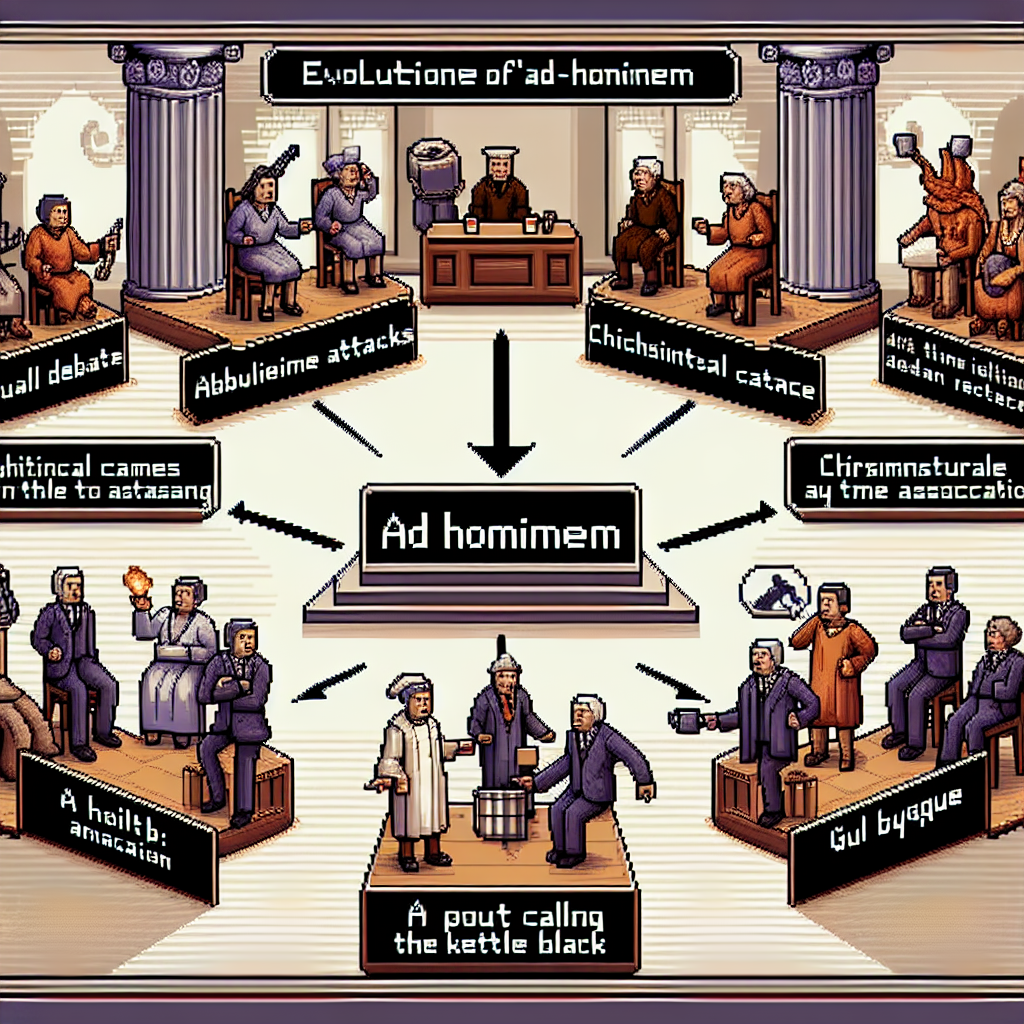Circular Reasoning in News: Introduction
Definition of Circular Reasoning
Circular Reasoning is a logical fallacy where the conclusion of an argument is used as a premise within the same argument. Despite its circular nature, it is deceptively persuasive to audiences. This occurs because the premise essentially repeats what the conclusion asserts.
Importance of Understanding Logical Fallacies
Understanding logical fallacies, such as Circular Reasoning, is crucial in today’s news landscape. It helps individuals critically evaluate the information presented to them daily. Additionally, by recognizing these fallacies, readers and viewers can think more critically, questioning assumptions before accepting them as truth. During news consumption, this awareness is vital in discerning reliable sources from those pushing misinformation. Moreover, this knowledge empowers the audience to engage in more informed discussions, as well as safeguard against potential manipulations that exploit logical fallacies for influence.
The Mechanics of Circular Reasoning
How Circular Reasoning Works
Circular reasoning, often referred to as a logical fallacy, involves an argument where the conclusion is included in the premise, essentially making the argument self-referential and lacking in actual support. Despite its flawed structure, it’s a common mistake in argumentation. This type of fallacious reasoning can create the illusion of a convincing explanation, leading individuals to accept conclusions without independent justification.
Common Examples in Everyday Life
You might encounter circular reasoning in everyday conversations, especially when opinions are strongly held but not well-examined. An example is someone saying, “This policy is successful because it works.” Here, the assertion that it ‘works’ is used both as a premise and a conclusion, offering no outside evidence. Additionally, such reasoning is often found in situations where the assumption cannot be questioned, creating a closed loop of thought. Recognizing these patterns is key to enhancing critical thinking and avoiding logical traps in discussions.
Circular Reasoning in News and Media
Case Studies of Circular Arguments in News Reports
In the realm of news and media, Circular Reasoning often masquerades as coherent argumentation, clouding clarity and understanding. It is essential to examine specific case studies where journalists or commentators employ this logical fallacy. Additionally, these analyses can shed light on the mechanics behind the flawed reasoning, illustrating how premises are repeated rather than proven.
The Impact on Public Perception and Trust
Circular Reasoning can significantly impact public perception, generating misleading conclusions because of its faulty structure. Despite efforts to maintain objectivity, reporters may unconsciously use circular arguments that erode trust in media. Therefore, recognizing these patterns helps audiences critically assess information. Before forming opinions, it’s crucial for consumers to engage with media content analytically. Engaging with diverse perspectives also aids in identifying logical consistencies, ultimately fostering a more informed public discourse. This preventative approach is vital, given the increasing challenges posed by misinformation during the digital age.
Identifying Circular Reasoning
Key Indicators and Warning Signs
Understanding how to identify Circular Reasoning is crucial because this fallacy can quietly undermine logical arguments. Key indicators often include restating the conclusion as a premise, rendering the argument logically invalid. You’ll notice an argument going around in circles without additional information or evidence, which is a clear warning sign.
Tools and Techniques for Analyzing Logical Consistency
Detecting Circular Reasoning involves utilizing several tools and techniques. One effective method is to question each premise individually to see if it merely restates another part of the argument. Additionally, a thorough comparison of premises can help reveal redundancies. It is essential to practice critical thinking regularly, as it equips one with the skills needed to identify flawed reasoning. By ensuring logical consistency and seeking evidence-based arguments, you can further ensure that conclusions are driven by solid reasoning rather than circular logic.
Circular Reasoning: Implications for Decision Making
Understanding the Risks
The dangers of Circular Reasoning are numerous, particularly regarding decision making. Such a fallacy traps individuals in a loop of flawed logic, stifling meaningful progress. Additionally, when decisions are based on such reasoning, they often lack the critical evaluation necessary for sound judgment. This can lead to the perpetuation of misinformation and misguided policies. Before making significant decisions, it is crucial to ensure that arguments are grounded in valid and objective evidence.
The Spread of Misinformation
The spread of misinformation is a direct consequence of Circular Reasoning in communication. During public discourse, false claims often become entrenched when asserted without scrutiny. Because people may inadvertently repeat these fallacies, they contribute to communal misunderstanding. This not only affects individual choices but also erodes public trust. Despite these challenges, employing effective critical thinking skills can combat the persuasive nature of these flawed arguments. However, a proactive approach towards identifying and dismantling Circular Reasoning is paramount to preventing further dissemination of incorrect information.
Strategies to Prevent Circular Reasoning
Enhancing Critical Thinking Skills
To effectively prevent Circular Reasoning, it is essential to enhance critical thinking skills. Educators and trainers should focus on teaching logical analysis techniques, which help individuals identify fallacies during argument evaluation. Additional workshops can introduce learners to comprehensive methods of dissecting arguments.
Encouraging Diverse Perspectives
Another strategy involves encouraging diverse perspectives in discussions and debates. By exposing people to differing viewpoints, they are less likely to rely solely on their pre-existing beliefs. Before making any judgments, considering multiple perspectives allows for a broader understanding of the issue at hand. Because diverse discussions foster inclusivity, they contribute to stronger, more robust arguments that avoid logical fallacies, including Circular Reasoning.
Circular Reasoning: Distinguishing Between Sound Logic and Fallacies
Case Study: A Misleading News Report
In a recent news article regarding climate change, the reporter asserted that “climate change is not a serious issue because it is not causing significant harm.” This statement is a classic example of Circular Reasoning because the conclusion repeats the premise without providing real evidence. Despite the lack of sound logic, the report circulated widely, influencing public misconceptions. This form of Circular Reasoning undermines informed discourse and skews public understanding, creating a cycle of misinformation.
Solution: Valid Arguments and Effective Communication
Journalists can prevent such pitfalls by relying on substantial evidence and expert opinions. Additional training in logical frameworks can enhance argumentation skills. During the editorial process, applying structured analytical tools ensures claims are supported by facts. Encouraging a diverse range of perspectives helps editors and writers to see arguments from multiple angles, which prevents Circular Reasoning and promotes clearer, more trustworthy communication. Also read band wagon.


